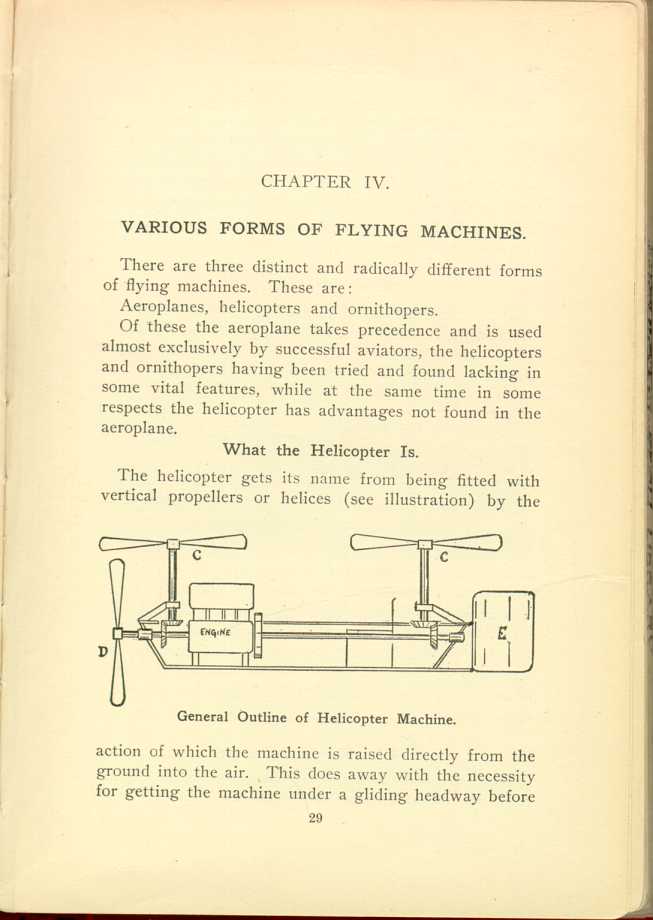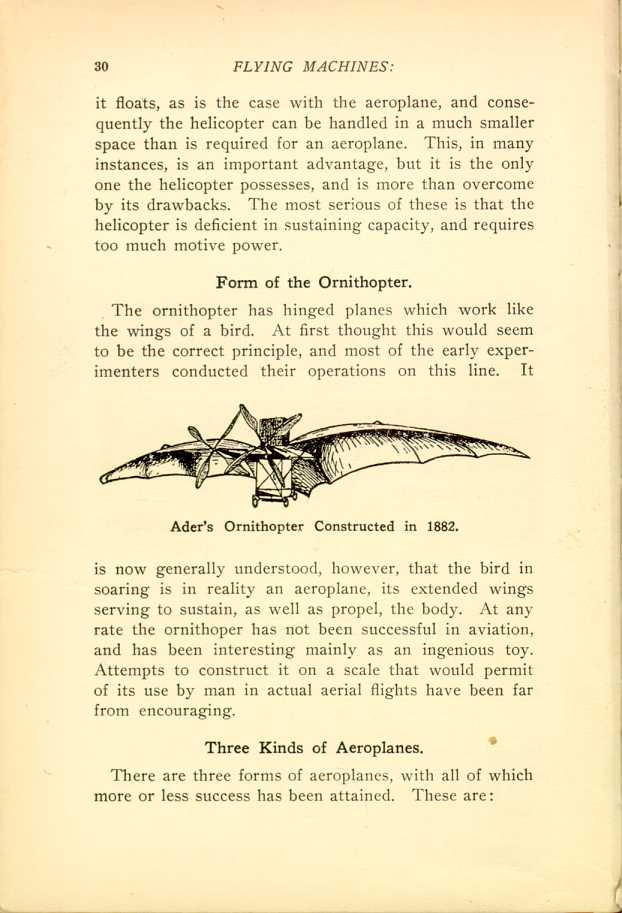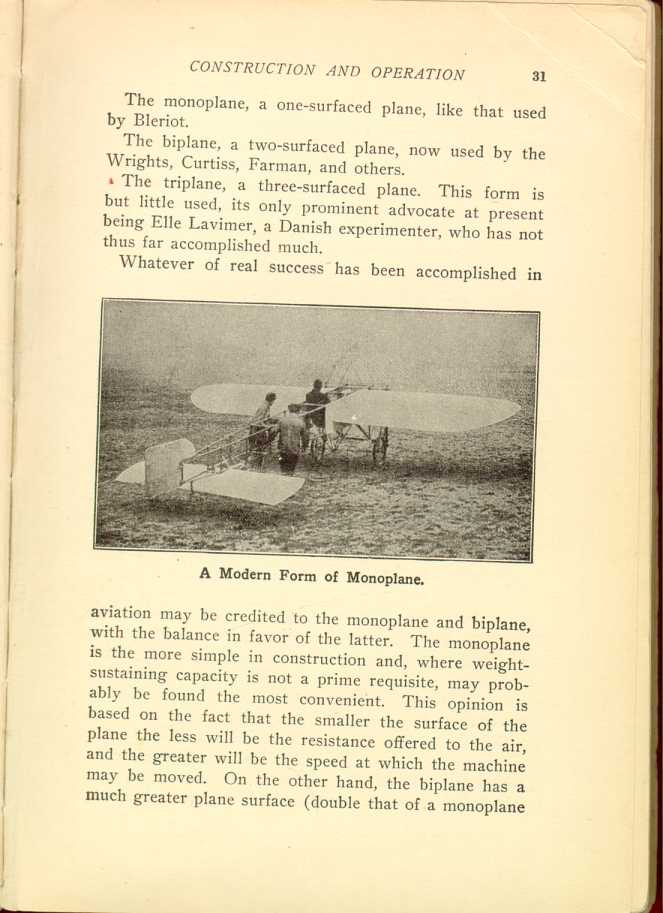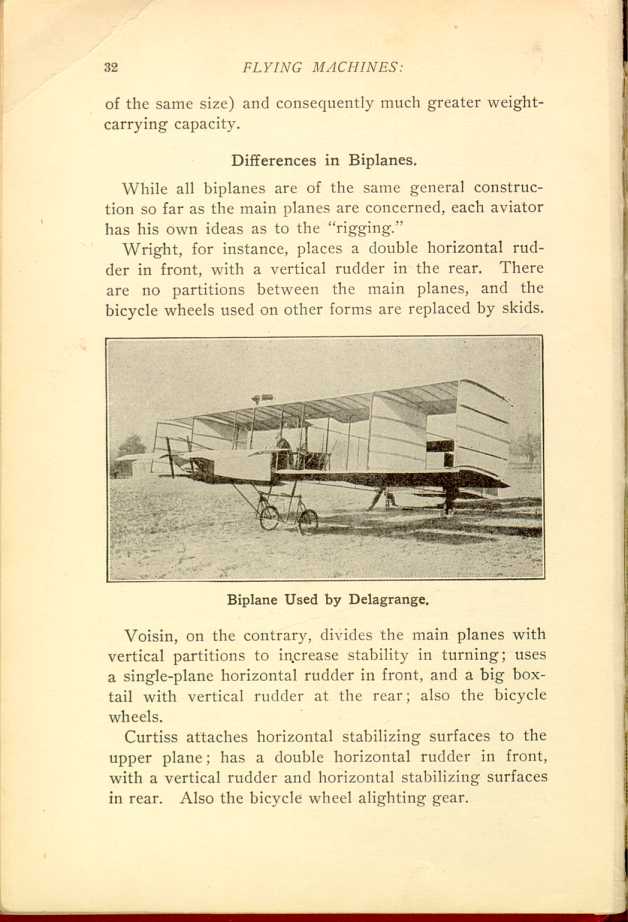4. CHAPTER IV.
VARIOUS FORMS OF FLYING MACHINES.
There are three distinct and radically different forms of flying machines. These are:
Aeroplanes, helicopters and ornithopers.
Of these the aeroplane takes precedence and is used almost exclusively by successful aviators, the helicopters and ornithopers having been tried and found lacking in some vital features, while at the same time in some respects the helicopter has advantages not found in the aeroplane.
What the Helicopter Is.
The helicopter gets its name from being fitted with vertical
propellers or helices (see illustration) by the

General Outline of Helicopter Machine.
[Description: Black and white illustration: Cross-section of helicopter
machine, with two propellers above and one at rear.]
Form of the Ornithopter.
The ornithopter has hinged planes which work like the wings of a
bird. At first thought this would seem to be the correct principle, and
most of the early experimenters conducted their operations on this line.
It

Ader's Ornithopter Constructed in 1882.
[Description: Black and white illustration: a block on wheels with large
bat-like wings and two windmill-like propellers.]
Three Kinds of Aeroplanes.
There are three forms of aeroplanes, with all of which more or less success has been attained. These are:
The monoplane, a one-surfaced plane, like that used by Bleriot.
The biplane, a two-surfaced plane, now used by the Wrights, Curtiss, Farman, and others.
The triplane, a three-surfaced plane This form is but little used, its only prominent advocate at present being Elle Lavimer, a Danish experimenter, who has not thus far accomplished much.
Whatever of real success has been accomplished in

A Modern Form of Monoplane.
[Description: Black and white photograph: An aeroplane, on ground, with
wheels, two large flat wings and a rudder. Man operates as two men
assist.]
Differences in Biplanes.
While all biplanes are of the same general construction so far as the main planes are concerned, each aviator has his own ideas as to the "rigging."
Wright, for instance, places a double horizontal rudder in front,
with a vertical rudder in the rear. There are no partitions between the
main planes, and the bicycle wheels used on other forms are replaced by
skids.

Biplane Used by Delagrange.
[Description: Black and white photograph: Biplane with wheels.]
Voisin, on the contrary, divides the main planes with vertical partitions to increase stability in turning; uses a single-plane horizontal rudder in front, and a big box-tail with vertical rudder at the rear; also the bicycle wheels.
Curtiss attaches horizontal stabilizing surfaces to the upper plane; has a double horizontal rudder in front, with a vertical rudder and horizontal stabilizing surfaces in rear. Also the bicycle wheel alighting gear.